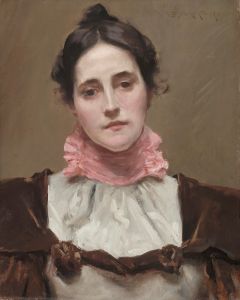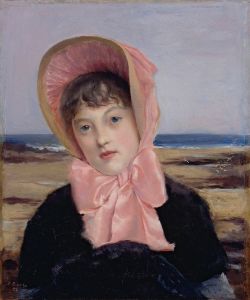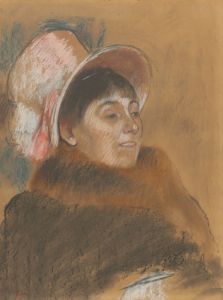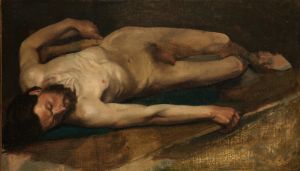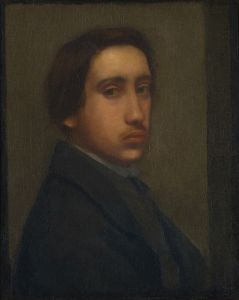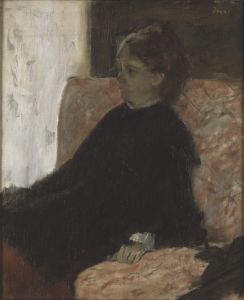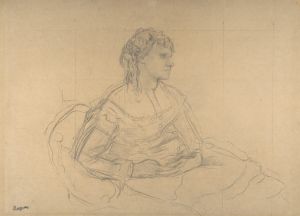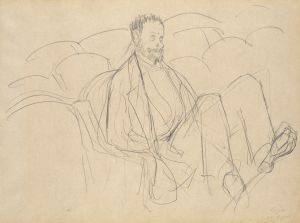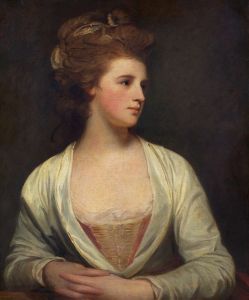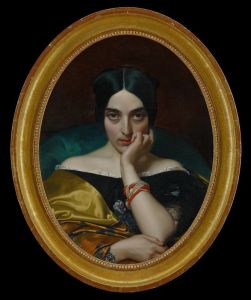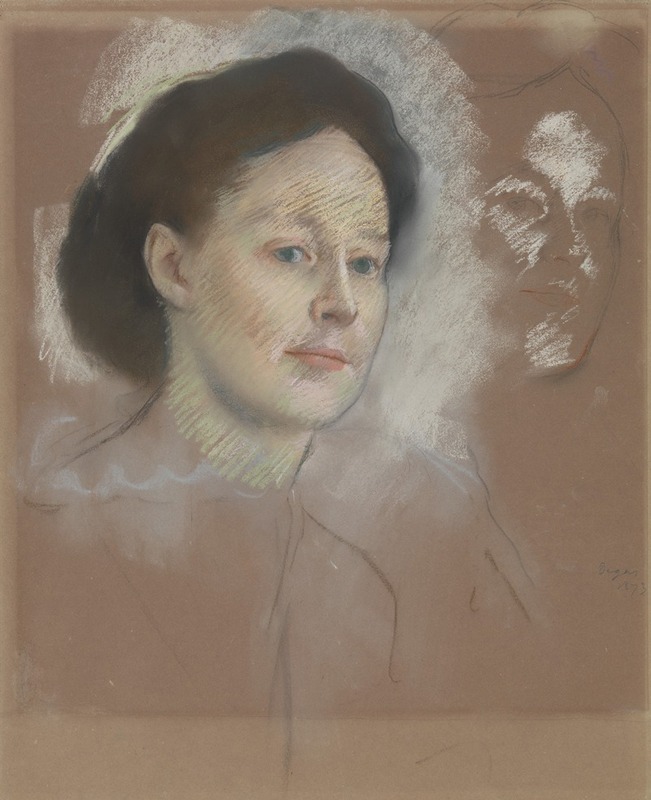
The Artist’s Cousin, Probably Mrs. William Bell
A hand-painted replica of Edgar Degas’s masterpiece The Artist’s Cousin, Probably Mrs. William Bell, meticulously crafted by professional artists to capture the true essence of the original. Each piece is created with museum-quality canvas and rare mineral pigments, carefully painted by experienced artists with delicate brushstrokes and rich, layered colors to perfectly recreate the texture of the original artwork. Unlike machine-printed reproductions, this hand-painted version brings the painting to life, infused with the artist’s emotions and skill in every stroke. Whether for personal collection or home decoration, it instantly elevates the artistic atmosphere of any space.
Edgar Degas, a prominent French artist known for his contributions to Impressionism, created a portrait titled "The Artist’s Cousin, Probably Mrs. William Bell." This painting is part of Degas's extensive body of work that often focused on capturing the nuances of human expression and the subtleties of everyday life. While Degas is widely recognized for his depictions of ballet dancers, his portraits also hold significant value in understanding his artistic evolution and personal connections.
"The Artist’s Cousin, Probably Mrs. William Bell" is believed to have been painted around 1865, a period when Degas was exploring portraiture with a keen interest in realism and psychological depth. This work is an example of Degas's early style, which was heavily influenced by the classical training he received at the École des Beaux-Arts in Paris and his admiration for the Old Masters. During this time, Degas was also influenced by his travels to Italy, where he studied Renaissance art, which is reflected in the meticulous attention to detail and composition in his portraits.
The subject of the painting, identified as "probably Mrs. William Bell," suggests a personal connection to the artist, as she is described as his cousin. However, specific details about Mrs. William Bell and her relationship with Degas remain limited in historical records. The ambiguity in the title reflects the uncertainty surrounding the exact identity of the sitter, a common issue in art history where documentation may be sparse or lost over time.
In this portrait, Degas employs a restrained color palette and a focus on the sitter's facial expression and posture, which are characteristic of his approach to capturing the inner life of his subjects. The painting is noted for its subtle use of light and shadow, which adds a sense of depth and realism. Degas's technique in this work demonstrates his skill in rendering textures and fabrics, as well as his ability to convey the personality and mood of the sitter through nuanced brushwork.
"The Artist’s Cousin, Probably Mrs. William Bell" is part of a broader collection of Degas's portraits that reveal his interest in exploring the human condition and the complexities of identity. While Degas is often associated with the Impressionist movement, his portraits, including this one, exhibit a more traditional approach that aligns with his academic training and his desire to capture the essence of his subjects with precision and empathy.
This painting, like many of Degas's works, contributes to the understanding of his artistic journey and the diverse range of themes he explored throughout his career. It stands as a testament to his ability to blend classical techniques with a modern sensibility, offering viewers a glimpse into the personal and familial connections that influenced his art.





